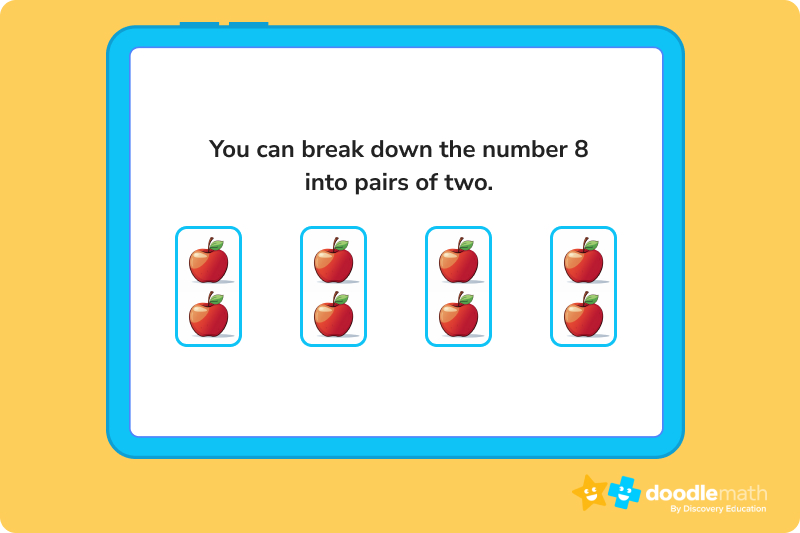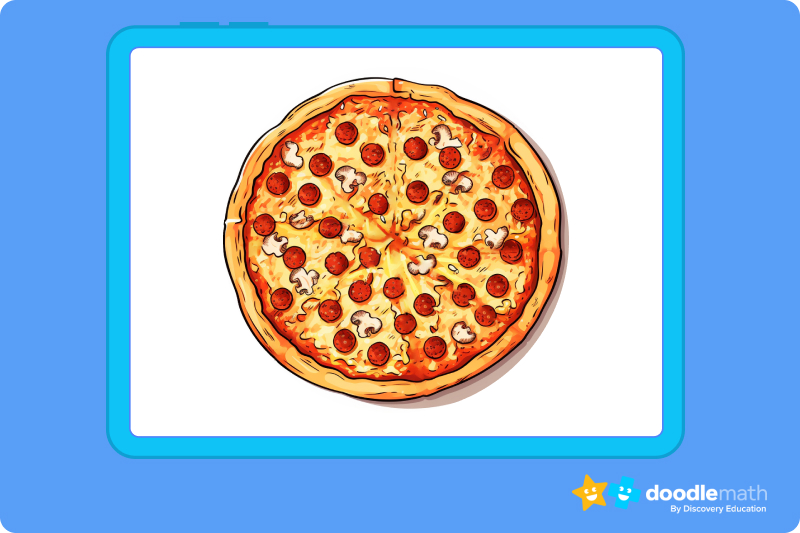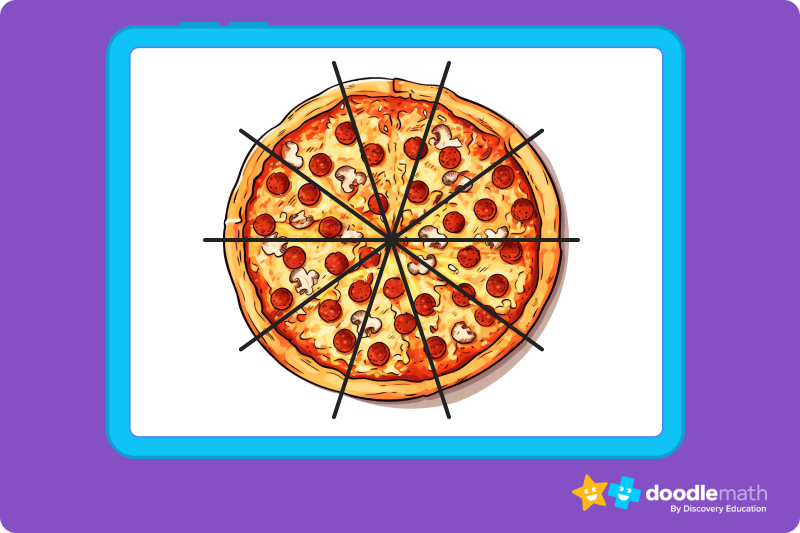Looking to lay the groundwork for multiplication? Easy – use repeated addition!

Author
Chal Emery

Expert Reviewer
Jill Padfield
Published: January 23, 2024


Looking to lay the groundwork for multiplication? Easy – use repeated addition!

Author
Chal Emery

Expert Reviewer
Jill Padfield
Published: January 23, 2024




Looking to lay the groundwork for multiplication? Easy – use repeated addition!

Author
Chal Emery

Expert Reviewer
Jill Padfield
Published: January 23, 2024


Key takeaways
By now, you’ve probably learned how to add and subtract. You may have even learned about multiplication, a skill that makes you find the product of two numbers. But what is multiplication, really?
If you are struggling to understand multiplication, you can definitely use repeated addition to help you. After all, it’s taking equal groups and adding them together. But what does that mean? Let’s explore more about repeated addition.
Repeated addition is the idea of adding multiple identical numbers or groups of numbers together that have the same value. This is a really helpful maths skill to learn if you want to begin practicing multiplication, as both multiplication and repeated addition follow some of the same rules!
Think of repeated addition as a simple way to combine the same numbers to get a specific amount. It might seem a bit scary, but we promise learning repeated addition will be a great help as you begin to learn to multiply.
Let’s take a look at a few examples of repeated addition below.

Repeated addition is an excellent gateway into teaching students a good foundation behind multiplication. It helps students link the ideas of addition and multiplication together by showing them how to combine numbers of equal value together.
Since repeated addition builds on skills that students already have, it’s a more natural path towards understanding the more complex idea of multiplying numbers. If your student or child is struggling somewhat with the idea of multiplication, introducing repeated addition into their learning might be a helpful solution!
Keep following below as we explain the best ways to teach your learner how to use repeated addition to solve the questions that might be stumping them.
Unlock unlimited maths questions
Put your learning into practice with fun exercises + games that are proven to boost ability!
Try DoodleMaths for free!
Select a year group
The concept of repeated addition is the same as multiplication: combining identical numbers a specific amount of times. If you haven’t memorized times tables yet, think of multiplication as repeatedly adding the same numbers together and the many sums they create.
This will make it easier to understand how multiplied values–or products–are formed. This process works for both small and large numbers; all you need is addition to figure out the right answer.
If multiplication seems a bit frightening in the beginning, use repeated addition as a helpful bridge toward understanding it better.
You’re having a slumber party and your friends want to order pizza. When the pizza comes, you have to decide how many slices to cut. You have 5 friends over. Discover how many slices to cut the pizza into by using repeated addition.

Using repeated addition, we know that everyone gets 2 slices! Yum!

Look! Up in the sky! Geese are flying in a V. You really want to know how many geese there are. Use repeated addition to find the answer.

There are 9 geese!
Word problems are an especially difficult part of learning, because they force you to put both your reading and maths skills to the test. But don’t worry, repeated addition can help you solve word problems as easily as it can help you solve numerical problems.
The same basic principles apply: find out which number or group of numbers you need to add, then find out how many times you’ll need to add that number to itself to get the correct answer.
Word problems might ask you to apply this to a range of objects, from circles to fruits to cars. But don’t let that scare you away, either. Just focus on determining which specific numbers need to be added together and how many times you’ll need to add them, and you’ll be just fine!
DoodleMaths is an award-winning app that’s filled with thousands of questions and games exploring multiplication, division and more!
Designed by teachers, it creates each child a unique work programme tailored to their needs, doubling their progression with just 10 minutes of use a day. Try it for free!


Here is the word problem:
Thomas has 3 bags of apple slices. Each bag has 8 apple slices inside of it. How many apple slices does Thomas have in total?
Step 1. Figure out what needs to be added together.
Each of Thomas’ bags has eight apple slices, which means we’ll be adding the number eight repeatedly for this question.
Step 2. Decide how many times you’ll add this number together.
Next, identify how many bags, or groups of apple slices, Thomas has. Like the question said, Thomas has three bags.
Step 3. Set up your repeated addition equation.
Now, we write out our equation. We know we have three bags of apple slices, and eight apple slices in each bag. Now, let’s write down an equation that shows this. It should look like this:
8 + 8 + 8
Each eight represents the amount of apples in each bag, and the number of eights in our equation (3) is equal to the number of bags Thomas has.
Step 4. Now let’s do our repeated addition.
We’re finally ready to do some adding! Continue your word problem by repeatedly adding eight three separate times:
8 + 8 + 8 = 24
We now know that Thomas has a total of 24 apple slices.
Step 5. Think of how repeated addition is the same as multiplying
What we just did in this word problem follows the same rules as multiplication. We multiplied the number of apple slices (8) by the number of bags each of these apple slices were placed in (3). The equation you would use to multiply these numbers would look like this:
3 X 8 = 24
Ready to give it a go?
Now that we’ve looked at a sample problem for repeated addition, we’re ready to do a few word problems on our own to see if we can put our skills to the test. Work through the following problems on your own. Feel free to look back at the practice problem above if you get a bit confused, or if you need a refresher on how repeated addition works.
Make sure not to get discouraged! Practice is a part of learning, and we promise you’ll get the hang of this in no time. Soon, adding and multiplying will be an absolute breeze! For more practice, check out our maths help app.
Click to reveal the answer.
9 + 9 + 9 + 9 + 9 + 9
The answer is 20.
How did we get here?
The answer is 9 + 9 + 9 + 9 + 9 + 9.
How did we get here?
The answer is 7 x 4.
How did we get here?
4 + 4 + 4 + 4
How did we get here?
Repeated addition involves adding a number together repeatedly. We use repeated addition when ew need to find the total sum of equal groups or repeated quantities. For example, 3 + 3 + 3 can be expressed as repeated addition, which is 3 groups of 3, or 3 times 3.
Repeated addition can be used to solve multiplication problems by breaking down the multiplication into adding the same number repeatedly. For instance, to solve 4 x 3, you can use repeated addition by adding 4 three times: 4 + 4 + 4 = 12. Therefore, 4 x 3 is equal to 12.
Repeated addition and division are what we call inverse operations. When using repeated addition, you add the same number repeatedly to find a total.
In division, you start with a total and split it into equal groups or parts. For example, if you have 12 objects and want to divide them equally into 3 groups, you can use repeated subtraction to find that each group will have 4 objects: 12 – 4 – 4 – 4 = 0.


Parents, sign up for a DoodleMaths subscription and see your child become a maths wizard!

Lesson credits

Chal Emery
Chal Emery is a writer who enjoys long drives through spectacular country, hanging out with his friends, and spending time getting lost in a decent film or TV show.

Jill Padfield
Jill Padfield has 7 years of experience teaching mathematics. She is currently working as a Business Analyst, working to improve services for Veterans while earning a masters degree in business administration.

Chal Emery
Chal Emery is a writer who enjoys long drives through spectacular country, hanging out with his friends, and spending time getting lost in a decent film or TV show.

Jill Padfield
Jill Padfield has 7 years of experience teaching mathematics. She is currently working as a Business Analyst, working to improve services for Veterans while earning a masters degree in business administration.
Book a chat with our team
If you’d like to use Doodle’s browser version, please visit this page on a desktop.
To log in to Doodle on this device, you can do so through our apps. You can find out how to download them here: